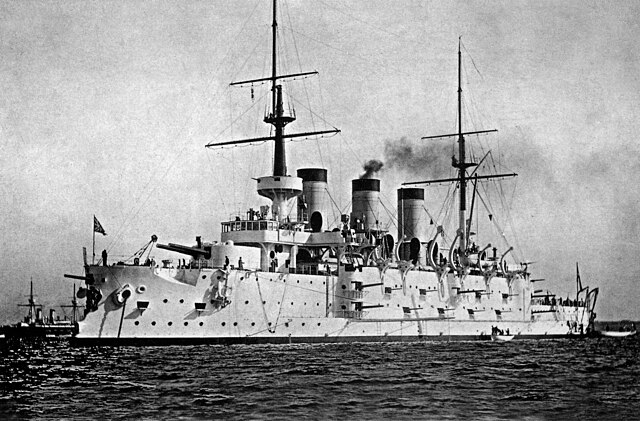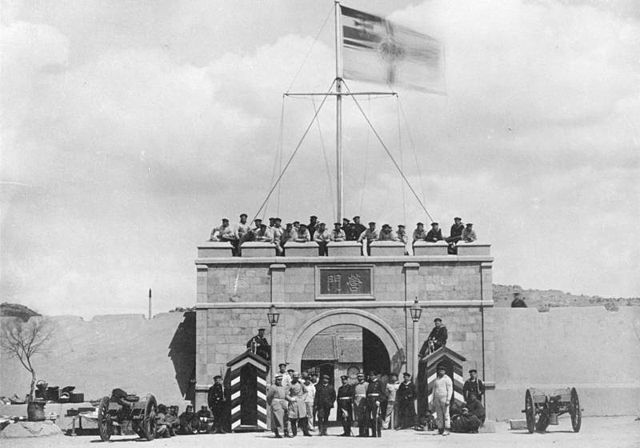The siege of Tsingtao was the attack on the German port of Qingdao (Tsingtao) during World War I by Japan and the United Kingdom. The siege was waged against Imperial Germany between 27 August and 7 November 1914. The siege was the first encounter between Japanese and German forces, the first Anglo-Japanese operation of the war, and the only major land battle in the Asian and Pacific theatre during World War I.
German forces during the siege, November 1914
Suwo was the flagship of the Japanese expeditionary fleet during the Siege of Tsingtao.
The Japanese seaplane carrier Wakamiya conducted the world's first naval-launched air raids in September 1914 against German positions in Qingdao.
British troops arriving at Qingdao in 1914
Qingdao, traditionally romanized as Tsingtao, is a city in eastern Shandong Province of China. Located on China's Yellow Sea coast, it is a major nodal city of the Belt and Road Initiative (BRI) that connects Continental and East Asia with Europe. It has the highest GDP of any city in the province. Administered at the sub-provincial level, Qingdao has jurisdiction over seven districts and three county-level cities. As of the 2020 census, Qingdao built-up area made of the seven urban districts was home to 7,172,451 inhabitants, making it the 15th largest city in China by population. Lying across the Shandong Peninsula and looking out to the Yellow Sea, it borders the prefecture-level cities of Yantai to the northeast, Weifang to the west and Rizhao to the southwest.
Main gate of former Chinese munitions depot, taken over by the Imperial German Navy, Kiautschou Bay, Shandong peninsula, 1898
Japanese military currency Siege of Tsingtao 10 sen (1914)
Image of Qingdao in the early 1900s
City Hall of Qingdao








